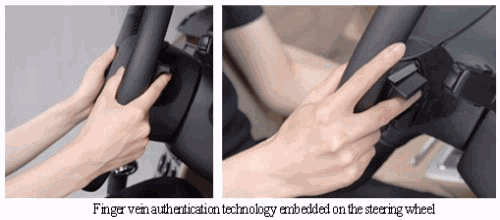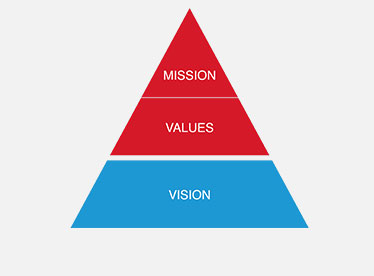-
Products
-
Transportation & Mobility Solutions
Transportation & Mobility Solutions
At Hitachi, we engineer industry-leading transportation and mobility solutions by leveraging decades of knowledge and using high-quality automotive material and components.
-
Energy Solutions
Energy Solutions
We believe the only solution for fulfilling the growing power requirements of industries and society is through a comprehensive portfolio of sustainable energy solutions and delivering innovative high-efficiency energy systems.
-
IT Infrastructure Services
IT Infrastructure Services
Hitachi’s state-of-the-art IT products and services are known to streamline business processes which result in better productivity and a higher return on investment (ROI).
-
Social Infrastructure: Industrial Products
Social Infrastructure: Industrial Products
Within the industrial sector, Hitachi is consistently delivering superior components and services, including industrial and automation solutions, useful in manufacturing facilities.
-
Healthcare & Life Sciences
Healthcare & Life Sciences
At Hitachi, we believe that healthcare innovation is crucial to a society’s advancement. A strong healthcare sector is often considered an inseparable element of a developed society.
-
Scientific Research & Laboratory Equipments
Scientific Research & Laboratory Equipments
Hitachi focuses on extensive research and development, transformative technology, and systems innovation to unfold new possibilities and create new value through scientific endeavors that strengthen the connection between science and social progress.
-
Smart Audio Visual Products
Smart Audio Visual Products
Since 1956, Hitachi audio visual products have provided state of the art solutions to consumers all over the world. It has been our pleasure to design competitive products at the lowest possible prices while maintaining our industry-leading quality standards for your comfort and enjoyment.
-
View All Products
Hitachi Products & Solutions
Hitachi, a technology leader in the U.S., offers a diverse set of products and solutions, and breakthrough technologies for smart manufacturing, green energy and mobility solutions that empower governments, businesses, and communities.
-
Transportation & Mobility Solutions
- Social Innovation Solutions
-
About Us
-
Hitachi in the U.S.A.
Hitachi in the U.S.A.
Discover information about the Hitachi group network across the Americas, upcoming events and sustainability endeavours, CSR policies, and corporate government relations.
-
About Hitachi Group
About Hitachi Group
Explore our leadership team, investor relations, environmental vision, and sustainability goals. Learn how Hitachi is leveraging its research & development capabilities for social innovation across industry verticals.
-
Hitachi in the U.S.A.
- News Releases
- Case Studies
- Careers
- R&D
Hitachi Develops Finger Vein Authentication Technology For Steering Wheels
--Driver verification by just gripping the wheel and different finger access to various functions --

Tokyo, October22nd, 2007 – Hitachi, Ltd. (NYSE: HIT / TSE: 6501) announced today the development of finger vein authentication technology which provides authorized driver verification in a fraction of a second just by gripping the steering wheel. This technology is expected to play an important role in future car information systems to prevent unauthorized access as information technology (IT) systems becomes increasingly integrated in automobiles; for example, authorizing automatic payment in drive-throughs or payment for music downloads to car audio systems, as well as preventing car theft. Further, by registering different functions to each finger, it is possible to use the system as a multi-function switch enabling, for example, one finger to set the driving environment such as seat or side mirror position, air-conditioning, etc. to suit the verified driver, and another finger to operate car navigation or car audio systems. Another advantage is that the system does not require the driver to glance to an operating panel and select a button, thus supporting even safer driving in a natural position.
An automobile exhibit fitted with the technology will be on display at the 40th Tokyo Motor Show 2007, to be held at Makuhari Messe, Chiba, Japan, from Saturday, 27th October through to Sunday, 11th November 2007.
Security consciousness has increased in recent years as crimes such as unauthorized entry or access to cars, information, etc. become increasingly visible. Amidst this current situation, in the field of personal identification, attention is being focused on biometric methods of personal verification to provide greater security.
In relation to automobiles, as well as security of the vehicle itself, there is also a growing demand to be able to enjoy the vehicle as a comfortable private space reflecting the driver’s preferences.
Hitachi has been developing an original biometric, finger vein authentication technology, which uses the finger vein pattern obtained from passing light through a finger as a key since 1997. In 2005, a grip-type finger vein authentication technology* was developed, enabling a door to be opened simply by gripping the handle. Since then, Hitachi has been working to develop an even more compact system to extend market applications.
In this development, the area of the finger scanned was changed from the finger surface to the side of the finger, and together with other improvements, provide easy operation as well as high security, and the possibility of developing new value. By this, the process from opening the car to authorizing in-vehicle payment, can be conducted without a key and protected by finger vein security, as well as instantly providing a driver specific comfortable driving environment. Further, all these operations can be conducted without transferring driver gaze from the forward direction, thus contributing to safer driving as well.
The Hitachi Group will continue to apply finger vein authentication technology, key technology in its security business, to a wide area of applications such as office admission control, PC log-in, bank ATM’s and settlement systems.
Features of the technology developed are as follows:
(1)Method to authenticate the finger vein pattern on the side of the finger
The finger vein authentication method used until now was designed ergonomically to rest the surface of the finger on the palm side near the authentication equipment to capture and authenticate the image of the vein pattern. As such, the sensor was place underneath the finger rest. In objects such as handles where space to embed the sensor is restricted, the thickness of the mechanical section detracted from the operability, and thus it was difficult to fix the sensor in an ergonomically ideal position.
By focusing on the finger vein pattern which can be obtained from the side of the finger, it was possible to design a compact unit where the finger is sandwiched between the light source and camera, and no component needs to be added below the finger rest thus increasing flexibility in where the unit is attached.
(2)Use as a multi-function switch where operation is controlled by different fingers
By registering the vein pattern of each finger and specifying the functions to be controlled by each finger, it is possible to use the authentication system as a multi-function switch controlled by simply changing the finger to be scanned.
Quick response time and accuracy, which are advantage features of finger vein authentication, enable the driver to operate the device with the same sensation and quick response as pushing a button.
The newly developed technology is expected to provide even greater amenity to security technology, and find a broad range of applications. Hitachi intends to commercialize the technology in applications in various fields, beginning with automotive products.
Note
*17th October 2005 News Release: “Hitachi develops grip-type finger vein authentication technology”






